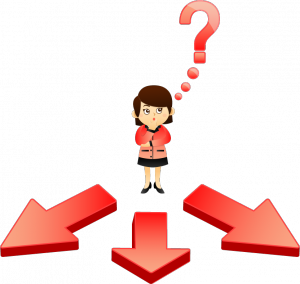Much is generally made of one particular Google Analytics metric over most others and that’s the bounce rate. For those of you who don’t know, the bounce rate applies to the percentage of single page visits people make to your site. It does not mean that someone visits your site and then immediately leave as many believe and it does not give any indication of how long people spend on that particular page as Google stops measuring this after 30 mins.
You see a high percentage figure and alarm bells immediately start to ring. You have to bring that number down. Right?
Not exactly. Whether a high bounce rate is a problem depends on what your page is there for. First of all, if you have a single page site then you will have a high bounce rate because that is the only place potential customers can visit. If you are plugging a blog post, that too may well have a high bounce rate because people are coming to find out that particular bit of information, you have provided it and they can now leave without exploring the rest of your site. That’s perfectly acceptable visitor behaviour, isn’t it?
The Difference Between Google Bounce Rates and Exit Rate

- Visits the landing page.
- Clicks on the link to see your product.
- Selects to buy the product.
- Enters their credit card details.
- Pays
If the exit rate for stage 3 is high then you can be sure that a number of your customers are declining to buy your product and this will need some work to improve conversions and is a great indicator something is wrong at this stage, it maybe a variety of different reasons like a glitch, a slow loading page or a ‘turn off’ like your postage rate is putting people off. On the other hand, if you have high Google bounce rates for your landing page then your information will need to be tweaked to funnel customers into the next stage of the process. These metrics from Google are very handy when analysing the behaviour of visitors to your site but a misunderstanding can cause unnecessary anxiety.
Is Your Page Doing What It’s Supposed To?
Businesses tend to focus on their Google bounce rates without much thought as to what a particular page is there for. A website such as Amazon will have lower bounce rates because people tend to browse different pages looking for the product they want. Let’s say, though, your site doesn’t offer products but the page you have gets visitors to do what you want them to do – for example, contact you by phone to make an appointment. You will then have a high bounce rate for a page that is actually doing its job perfectly well.
The problem is that many businesses often apply a negative bounce rate to a positive outcome and come unstuck. That means they may well change their approach when, in fact, what they are doing is working perfectly well.
What is a Good Bounce Rate?
It’s difficult to pin down because bounce rate will vary depending on a wide range of factors including the industry you are in, the stage customers are in their buying cycle, and why they are there, to name just a few. A blogging site might well expect a high Google bounce rate between 70 and 97% whilst a retail site may well get worried if their rate is over 40%. Landing pages, where everything is completed in one place and the customer leaves satisfied, will also have a high bounce rate whilst lead generation sites would be looking for something considerably lower.
Our advice? Interpreting Google bounce rates is all about context. Understanding what bounce rate really means for you and the pages on your site could save you a whole lot of bad decision making and sleepless nights. There is a lot of good information in this article by SiteoScope SEO Hacks: What is a Good Bounce Rate?